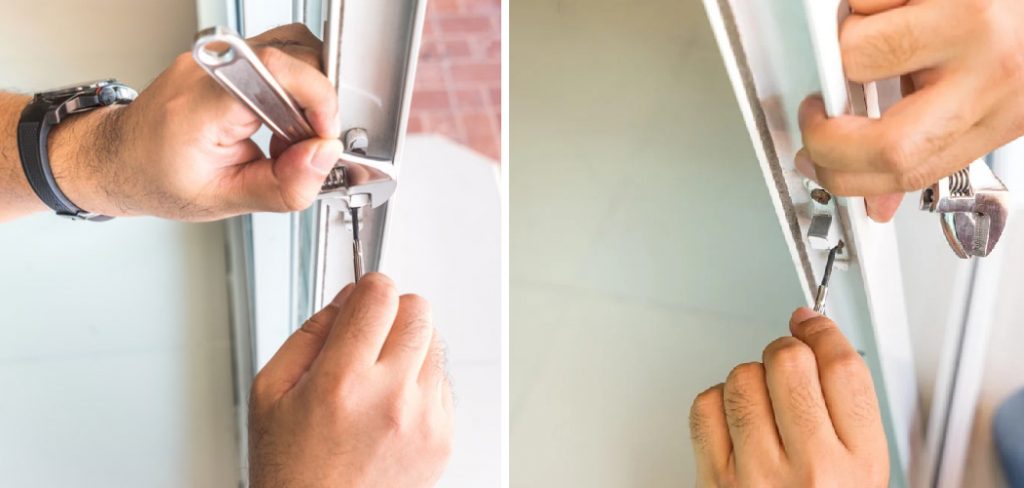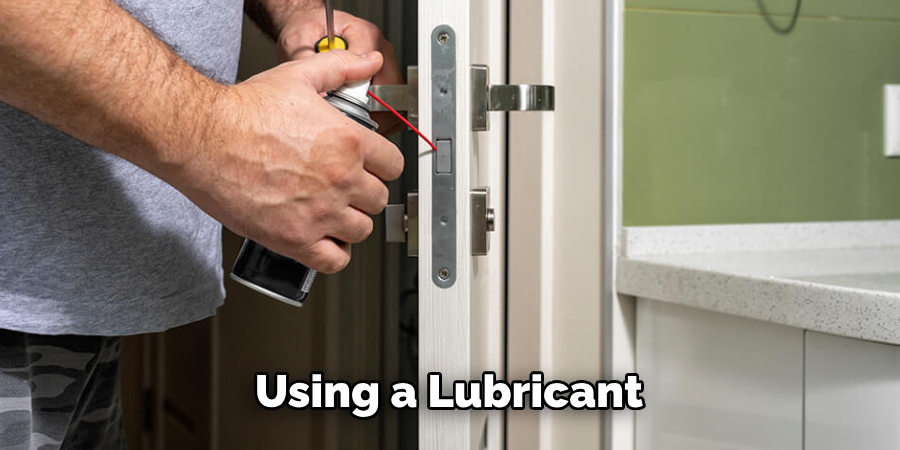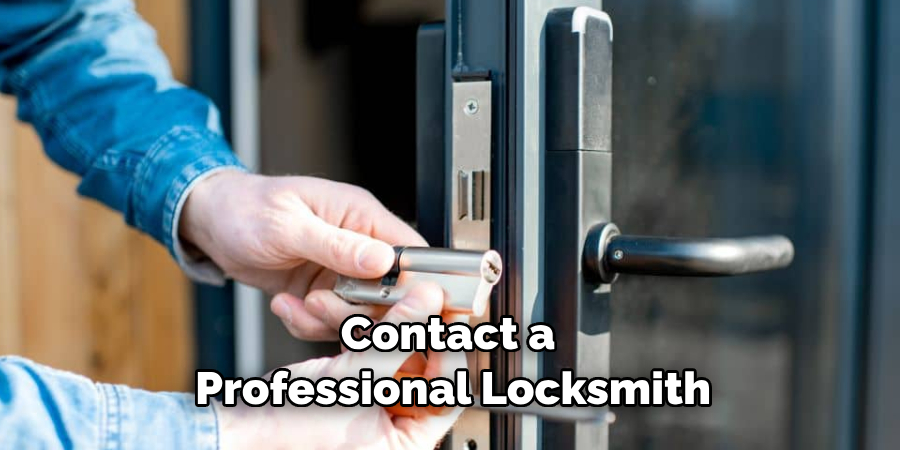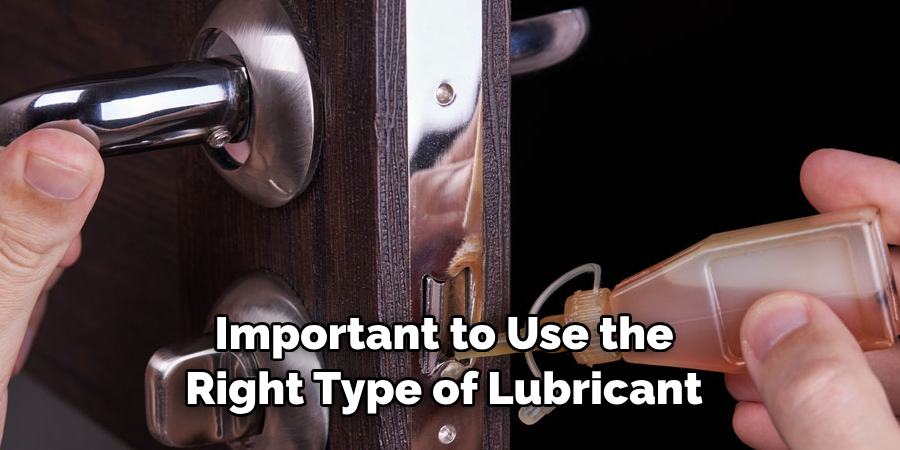Do you always have to struggle with sliding door locks that just won’t seem to work properly anymore? If your locks are constantly jamming, sticking in place, or failing to unlock no matter how many times you try, then this article is for you!

In it, we’ll discuss some of the common causes of lock failure as well as explain helpful tips and tricks on how to fix sliding door lock. From basic cleaning procedures all the way up to more complicated operations such as replacing broken parts and installing new mechanisms altogether; by following our guide through all the steps necessary, your stubborn sliding door lock should be functioning again in no time!
9 Best Ways on How to Fix Sliding Door Lock
1. Clean the Lock:
One of the most common reasons why locking mechanisms fail on sliding doors is due to dirt and debris buildup in the lock. Take a look at your lock and look for any signs of grime or dust that might be hindering its operation. If you do find some, then try to remove it with a damp cloth, compressed air, or a soft-bristled brush.
2. Inspect for Rust:
Rust is another common cause of locking mechanism failure when it comes to sliding doors. If the lock is made from metal, then rust can easily accumulate over time which will interfere with the smooth operation of the lock.
Take a look at the components and use sandpaper or steel wool to remove any signs of rust. Inspecting and cleaning the lock on a regular basis can help prevent rust from forming in the first place.
3. Lubricate the Lock:

Using a lubricant such as WD-40 is also an effective way to fix a sliding door lock. Apply some to the components of the lock and then work it into all of them with a brush or cloth. This will help ensure that all parts move smoothly, reducing any friction that may be causing problems with the locking mechanism.
4. Check Alignment:
Make sure that the door is properly aligned with its frame as this can also affect the way a lock operates. If it’s not, then use a level to determine how much adjustment needs to be made before proceeding with any other repairs. Sometimes, realigning the door is enough to fix a sliding door lock.
5. Replace Worn Out Parts:
If you can’t seem to get the lock working properly even after cleaning and lubricating it, then your next step should be to inspect each of its components for any signs of wear or damage. If you notice that anything looks out of shape or is missing, then you may need to replace it.
6. Install New Lock:
If your lock cannot be repaired and needs to be replaced, then it’s time to install a new one. Make sure that the new lock is compatible with the existing hardware on your door before proceeding with the installation process. Use the instructions included with the new lock to make sure it is properly mounted and aligned.
7. Adjust Spring Tension:
The spring tension of a sliding door lock can also be adjusted if necessary. Doing so will help ensure that it operates smoothly and efficiently. Consult your manufacturer’s instructions to figure out how to adjust the springs correctly for your specific type of door lock. You can also find tutorials online that will walk you through the process.
8. Tighten Up Screws:
Make sure to check all of the screws on your lock for any signs of loosening and tighten them up if necessary. This is especially important after replacing worn out parts as some components may require additional fastening. Loose screws can easily cause a lock to malfunction or fail to operate altogether.
9. Adjust the Door Striker Plate:
Sometimes, simply adjusting the striker plate of a sliding door lock is enough to fix it. Make sure that the strike plate is properly aligned with the latch or bolt so that when you attempt to close and lock your door everything fits together correctly. If the strike plate needs to be adjusted, then take a look at your manufacturer’s instructions for more information on how to do this safely and correctly.

By following these guidelines, you can easily fix any problems with your sliding door lock in no time! If you find that the issue persists after trying all of the solutions listed here, then it may be time to call a professional locksmith. A skilled locksmith can quickly identify and resolve any underlying issues so that your lock works properly again.
Additional Tips and Tricks to Fix Sliding Door Lock
1. Make sure the latch is properly aligned by adjusting the screws on both sides of the lock. This will help make sure the lock is catching when it should.
2. Check to see if the parts of the door that are in contact with the locks are still aligned and secure. Sometimes these pieces may shift out of place over time and need to be adjusted or replaced.
3. Make sure all pieces, including screws, are tightened securely so they don’t become loose later down the line.
4. Lubricate the locks as needed with a graphite-based lubricant, which can help prevent rust and corrosion from developing over time.
5. Consider replacing your sliding door lock if the above tips do not work or if it begins to act up frequently over time. This will ensure that you have a secure locking system for your door in the long run.
6. To help keep your sliding door lock in top shape, consider installing a deadbolt lock for added security and peace of mind. This can give you an extra layer of protection against unwanted visitors or burglars.
7. Lastly, if all else fails, contact a professional locksmith to inspect and repair your sliding door lock for optimal safety.

8. Keeping up with regular maintenance on your sliding door lock will ensure that it remains secure and functioning smoothly for many years to come. It’s important to take the necessary steps today in order to prevent bigger issues down the road.
Following these tips and tricks can help make sure that your sliding door lock stays in top shape and you stay safe. Don’t wait until it’s too late – be proactive about the security of your door today! With a little bit of TLC, your sliding door lock should provide you with years of reliable protection.
Frequently Asked Questions
What is a Sliding Door Lock?
A sliding door lock is a locking device that is used on doors that have tracks along the bottom or top that allow them to slide open and close. It is usually mounted on the track, near the door handle. Depending on the type of lock, it may be operated by a key or some other form of manual operation.
What are common issues that cause a sliding door lock to malfunction?
The most common issue causing a sliding door lock to malfunction is misalignment between the locking mechanism and its corresponding track. This misalignment causes the lock to bind up and not slide properly. Other common issues include dirt or debris on the tracks, worn-out pins, faulty hardware, and loose screws.
Can I lubricate a sliding door lock?

Yes, you can lubricate a sliding door lock. However, it is important to use the right type of lubricant in order to avoid damaging any hardware or track components. It is best to use a dry lubricant such as graphite or silicone spray in order to ensure smooth operation of the locking mechanism. Additionally, make sure to wipe away any excess lubricant in order to avoid creating a mess.
How often should I inspect and maintain my sliding door locks?
It is recommended to inspect your sliding door locks regularly for signs of wear or damage. Additionally, it is important to clean the tracks and apply fresh lubricant every few months in order to keep your lock operating properly. By taking these simple steps, you can help to ensure that your sliding door lock is working correctly and securely.
Do I need a professional to repair or install my sliding door locks?
No, it is possible to complete most repairs or installations yourself with the right tools and knowledge. However, if you are uncomfortable with performing any type of repair or installation, it is best to contact a professional locksmith or handyman for assistance.
Can I buy replacement parts for my sliding door lock?
Yes, there are many sources of replacement parts available online for most types of sliding door locks. Additionally, you may be able to find the necessary components in your local hardware store. Make sure to take note of the type of lock you have and a photo of any broken parts in order to make sure that you are purchasing the correct components.
Conclusion
After learning more about how to fix sliding door lock, you should be able to repair any issues related to this particular hardware in no time. If your attempt at repairing the door doesn’t work, consider speaking to a locksmith for advice. You can also look online for tutorials and guides that will help you find an ideal solution for your particular issue.
Remember, there are many ways to fix a sliding door lock without breaking the bank so don’t let yourself get stuck with an unsecure door. With the right phrase and dedication, you can make sure that your sliding doors remain secure. It is worth the effort of knowing how to fix a sliding door lock in order to keep your home safe—so go ahead and give it a try!
About
Safety Fic is a distinguished figure in the world of Diy design, with a decade of expertise creating innovative and sustainable Diy solutions. His professional focus lies in merging traditional craftsmanship with modern manufacturing techniques, fostering designs that are both practical and environmentally conscious. As the author of diy, Safety Fic delves into the art and science of Safety Fic-making, inspiring artisans and industry professionals alike.
Education RMIT University
(Melbourne, Australia) Associate Degree in Design (Safety Fic) Focus on sustainable design, industry-driven projects, and practical craftsmanship. Gained hands-on experience with traditional and digital manufacturing tools, such as CAD and CNC software.
Nottingham Trent University
(United Kingdom) Bachelor’s in diyfastly.com and Product Design (Honors) Specialized in product design with a focus on blending creativity with production techniques. Participated in industry projects, working with companies like John Lewis and Vitsoe to gain real-world insights.
Publications and Impact
In diy, Safety Fic his insights on indoor design processes, materials, and strategies for efficient production. His writing bridges the gap between artisan knowledge and modern industry needs, making it a must-read for both budding designers and seasoned professionals.
